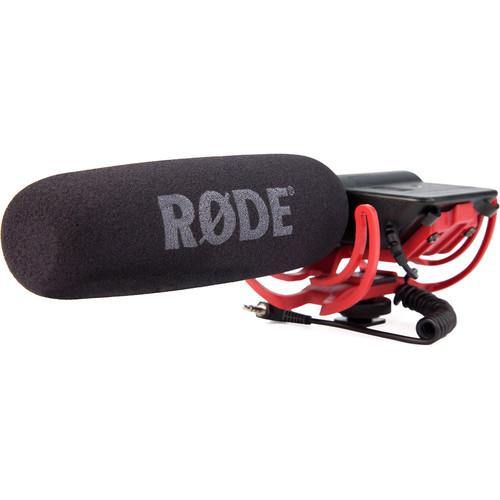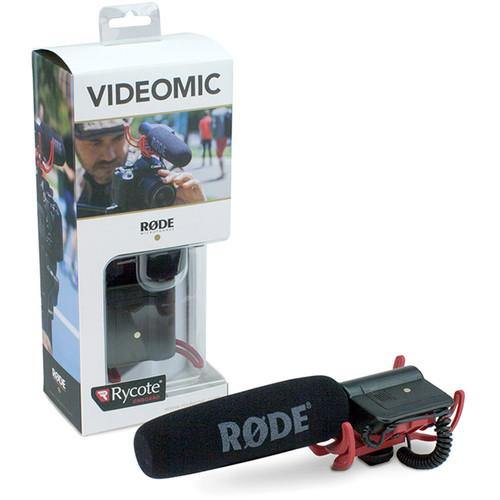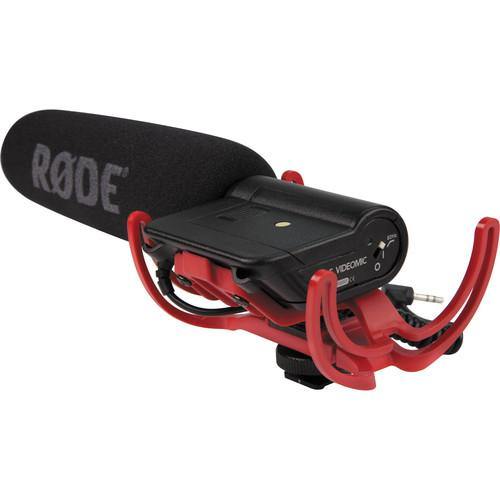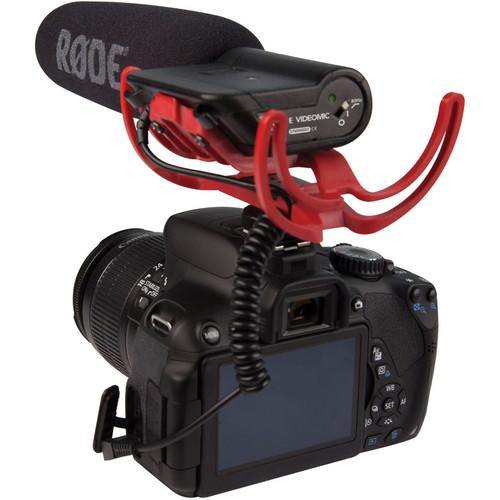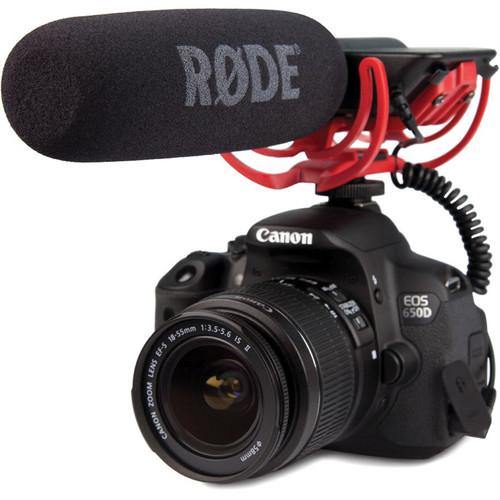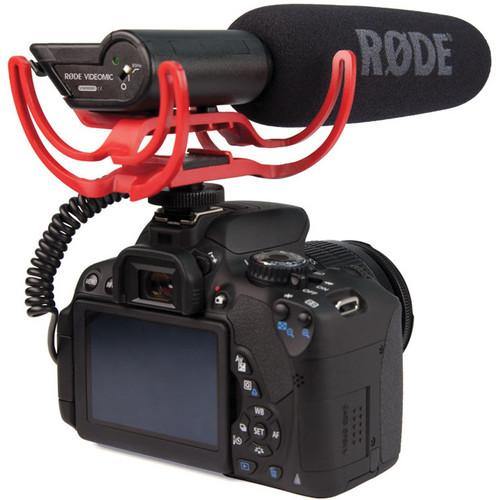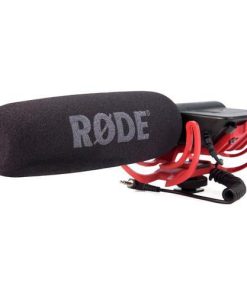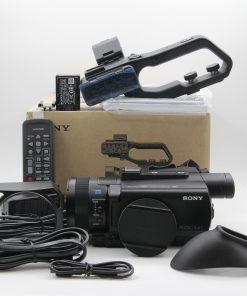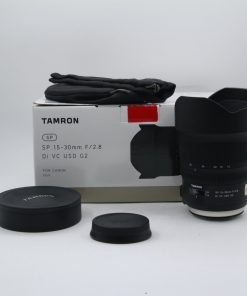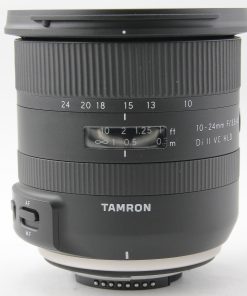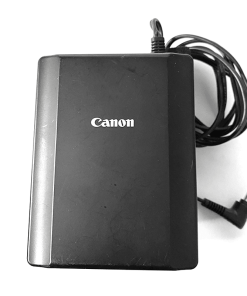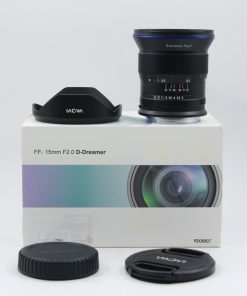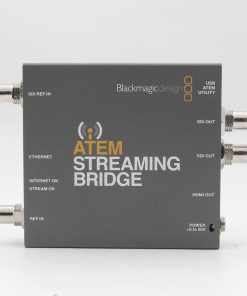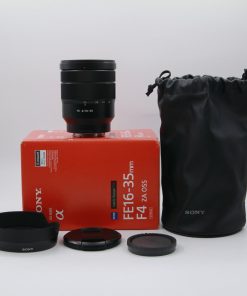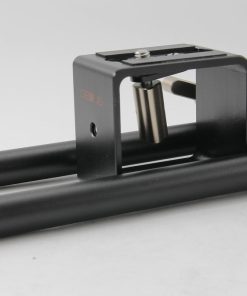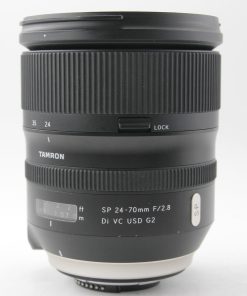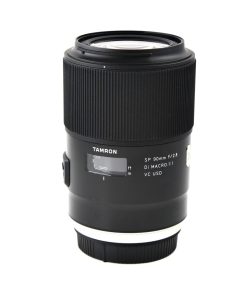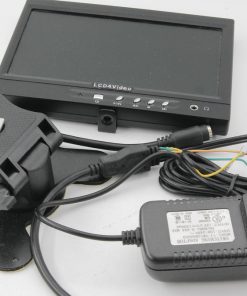Rode VideoMic with Rycote Lyre Suspension System Rode
$ 149,00 $ 59,60
The VideoMic with Rycote Lyre Suspension System from Rode is a shotgun microphone that can easily be mounted on a DSLR camera. It features a Rycote suspension system that attaches to the camera’s shoe. The VideoMic is lightweight, and when mounted on a camera it does not appear in the frame. The VideoMic can also mount to Rode’s boompoles for elevated audio capture. Its supercardioid polar pattern attenuates sounds from the sides. The result is a signal that sounds closer to the camera, even when shooting in noisy environments or at moderate distances.
The included Rycote Lyre is a non-elasticated suspension structure composed of a hard-wearing thermoplastic. It is more effective at acoustically decoupling microphones from unwanted vibrations, handling and cable-borne noise than elasticated suspensions. The lyre remains effective at a wide range of temperatures and is virtually indestructible. It will never wear out, sag, snap or require any rethreading to maintain its effectiveness.
An attached, coiled cable terminates to a 1/8″ (3.5mm) mini output connection. The VideoMic features a condenser element that utilizes a standard 9V battery (sold separately). The microphone will run for approximately 100 hours on a single battery.
- Barrel-Canceling Pickup
- The Rode Video Mic functions as a true line+gradient microphone with a supercardioid pattern in the front and a barrel that cancels side audio. The result is maximum pickup of the source in highly ambient and noisy environments.
- Selectable 10 or 20 dB Pad
- When capturing audio in loud environments, the VideoMic offers built-in attenuation. The selectable 10 or 20 dB pad lessens the microphone’s sensitivity, allowing it to handle higher SPL levels without sacrificing clarity.
- High-Pass Filter Switch
- A high-pass filter switch eliminates room ambiance and noise below 80 Hz. This results in improved intelligibility while recording around machinery, wind or close proximities.
- Internal Power
- The condenser element is powered with a standard 9V battery for up to 100 hours (approximately).
Quick Shipping and Professional Packaging
Due to our long-term partnership in a long-standing partnership with UPS, FedEx, DHL and many other top global carriers we are able to offer a variety of shipping options. Our warehouse staff are highly trained and will be able to pack your goods in accordance with our exact and precise specifications. Your items will go through an exhaustive examination before they will be properly packaged prior to being sent out. We ship to thousands clients each day across multiple countries. This is a sign of our dedication to being the biggest online retailer in the world. The warehouses and centers of distribution are in Europe, as well as the USA.
Orders with more than 1 item are assigned processing times for each item.
Prior to shipping, we will examine thoroughly the items you've purchased. Currently, most orders are delivered within 48 hours. The delivery time will be between 3-7 days.
Returns
Stock is dynamic, and is not completely managed by us due to the involvement of several parties including the factory and our warehouse. The actual inventory may be changed at any time. It is possible that stock may run out after your order has been processed.
The period of time is 30 days. We are unable to exchange or refund your order if it has been 30 days since you purchased it.
Your item should be in the original packaging and be unused. It must also be returned in the original packaging.
Related products
* USED DEPARTMENT - OPEN BOX - OPEN BOX VIDEO
*** OPEN BOX EXCELLENT *** Sony PXW-Z90V 4K HDR XDCAM with Fast Hybrid AF Sony
* USED DEPARTMENT - OPEN BOX - OPEN BOX CAMERAS - Point & Shoot
* USED DEPARTMENT - OPEN BOX - OPEN BOX LENSES
*** DEMO *** Tamron SP 15-30mm f/2.8 Di VC USD G2 Lens for Canon EF Tamron
* USED DEPARTMENT - OPEN BOX - OPEN BOX LENSES
*** OPEN BOX *** Sigma 17-50mm f/2.8 EX DC OS HSM Lens (Nikon F) Sigma
* USED DEPARTMENT - OPEN BOX - OPEN BOX VIDEO
* USED DEPARTMENT - B-STOCK
*** FACTORY RECONDITIONED *** Tamron TELE CONVERTER 2.0X Lens for Canon EF Tamron
* USED DEPARTMENT - OPEN BOX - OPEN BOX ACCESSORIES
* USED DEPARTMENT - DISPLAYS
*** DEMO *** Tamron 10-24mm f/3.5-4.5 Di II VC HLD Lens for Nikon F Tamron
* USED DEPARTMENT - PRE-OWNED - USED ACCESSORIES
* USED DEPARTMENT - DISPLAYS
*** DEMO *** Canon SELPHY CP1500 Wireless Compact Photo Printer (White) Canon
* USED DEPARTMENT - OPEN BOX - OPEN BOX LENSES
*** OPEN BOX EXCELLENT *** Laowa 15mm f/2 FE Zero-D Lens for Canon RF Laowa
* USED DEPARTMENT - OPEN BOX - OPEN BOX ACCESSORIES
* USED DEPARTMENT - PRE-OWNED
* USED DEPARTMENT - OPEN BOX - OPEN BOX ACCESSORIES
*** OPEN BOX EXCELLENT *** Nikon 12×42 Monarch M5 Binoculars Nikon
* USED DEPARTMENT - OPEN BOX - OPEN BOX LENSES
*** OPEN BOX EXCELLENT *** Sony FE 16-35mm f/4 Vario-Tessar T* ZA OSS Lens Sony
* USED DEPARTMENT - B-STOCK
*** FACTORY RECONDITIONED *** Tamron 150-500mm F/5-6.7 Di III VC VXD Lens for Sony E Tamron
* USED DEPARTMENT - OPEN BOX - OPEN BOX ACCESSORIES
*** DEMO *** Genus DSLR Adapter Bar System for DSLR Cameras Genus
* USED DEPARTMENT - OPEN BOX - OPEN BOX LENSES
*** OPEN BOX EXCELLENT *** Laowa 9mm f/2.8 Zero-D Lens for Fujifilm X Laowa
* USED DEPARTMENT - OPEN BOX - OPEN BOX LENSES
*** OPEN BOX EXCELLENT *** Nikon 2x Z Teleconverter TC-2.0x Nikon
* USED DEPARTMENT - OPEN BOX - OPEN BOX LENSES - Mirrorless - Fujifilm X
*** OPEN BOX EXCELLENT *** Fujifilm XF 16mm f/1.4 R WR Lens Fujifilm
* USED DEPARTMENT - B-STOCK
*** FACTORY RECONDITIONED *** Tamron SP AF 24-70mm F/2.8 Di VC USD G2 Lens for Nikon F Tamron
* USED DEPARTMENT - B-STOCK
*** CERTIFIED PRE-OWNED *** Tamron 150-500mm F/5-6.7 Di III VC VXD Lens for Fujifilm X Tamron
* USED DEPARTMENT - B-STOCK
*** FACTORY RECONDITIONED *** Tamron TELE CONVERTER 1.4X Lens for Canon EF Tamron
* USED DEPARTMENT - B-STOCK
*** FACTORY RECONDITIONED *** Tamron 11-20mm F/2.8 Di III-A RXD Lens for Fujifilm X Tamron
* USED DEPARTMENT - B-STOCK
*** FACTORY RECONDITIONED *** Tamron SP 90mm f/2.8 Di Macro 1:1 VC USD Lens for Canon EF Tamron
* USED DEPARTMENT - OPEN BOX - OPEN BOX LENSES
*** OPEN BOX *** Panasonic Lumix S 20-60mm f/3.5-5.6 Lens ( L-Mount) Panasonic
* USED DEPARTMENT - DISPLAYS
*** DEMO *** Tamron SP 90mm f/2.8 Di Macro 1:1 VC USD Lens for Nikon Tamron
* USED DEPARTMENT - DISPLAYS
*** DEMO *** Tamron 100-400mm f/4.5-6.3 Di VC USD Lens for Nikon F Tamron
* USED DEPARTMENT - OPEN BOX - OPEN BOX LENSES - Mirrorless - Sony E
*** OPEN BOX EXCELLENT *** Laowa Argus 33mm f/0.95 CF APO Lens for Sony E Laowa
* USED DEPARTMENT - OPEN BOX
* USED DEPARTMENT - PRE-OWNED
*** DEMO *** Godox VDS-M2 Supercardioid Camera-Mount Shotgun Microphone LIKE NEW Godox
* USED DEPARTMENT - PRE-OWNED
